Improving the Quality of Gembili Pickle (Dioscorea esculenta) Through Fermentation with Starter Culture Lactobacillus plantarum B1765
DOI:
10.29303/jpm.v20i2.8590Published:
2025-03-19Issue:
Vol. 20 No. 2 (2025)Keywords:
Gembili Pickle; L. plantarum B1765; Product Quality; Synbiotic FoodArticles
Downloads
How to Cite
Downloads
Metrics
Abstract
Gembili is a type of tuber that grows widely in Indonesia and has the potential to be developed into functional food, but its utilization has not been optimal. One of the efforts that can be made is the development of gembili as pickle, a synbiotic fermented product of gembili by a starter culture of Lactobacillus plantarum B1765, which has been known as a probiotic. This study examines the effect of fermentation duration on the growth of total lactic acid bacteria (LAB), pH value, Total Titratable Acidity (TTA), and organoleptic quality aspects. The gembili tubers were cut into sticks and fermented for 0, 2, 4, and 6 days, using Lactobacillus plantarum B1765 starter culture at 37℃. Total LAB was calculated by total plate count (TPC), pH by pH meter, TTA by acid-base titration, and organoleptic test using untrained panellists to assess the preference level using a hedonic scale. The results showed that total LAB increased from the beginning of fermentation (2.37 x 107 CFU/mL) to 1.15 x 108 CFU/mL fermentation 4 days but decreased to 1.01 x 105 CFU/mL at the end of fermentation (6 days). The pH decreased from 6.43 ± 0.02 to 3.07 ± 0.002, and TTA increased from 0.31 ± 0.010% to 0.53 ± 0.008% at the end of fermentation (6 days). Organoleptic test results showed that fermentation time affected the preference level for color, taste, aroma, and texture. The highest preference level of the four aspects was the product with a fermentation time of 4 days with a preference level in the very like category. The results of this study indicate that the optimal time of gembili pickle fermentation is 4 days based on the total amount of LAB (> 106 CFU/mL), TTA (> 0.20%), pH (3.4-4.3) has met SNI criteria and also shows the highest preference level in color, taste, aroma, and texture. Gembili pickles can be recommended to be developed as a safe synbiotic product.
References
A. Yuniastuti, A. N. Khasanah, N. W. Harini, W. Christijanti, and D. H. Utomo, “Apoptosis Potency Prediction of Steroid Saponin from Gembili (Dioscorea esculenta) as Bcl-2 and Bcl-xL Inhibitors in Colon Cancer,” Trends Sci., vol. 19, no. 24, pp. 1–15, 2022, doi: 10.48048/tis.2022.1573.
M. Sabda, H. S. Wulanningtyas, M. Ondikeleuw, and Y. Baliadi, “Characterizing the Potential of Local Gembili (Dioscorea esculenta L) from Papua as an Alternative Staple Food,” Bul. Plasma Nutfah, vol. 25, no. 1, p. 25, 2019, doi: 10.21082/blpn.v25n1.2019.p25-32.
E. Firdausa and J. M. Maligan, “Assessment of Red Dragon Fruit Potential as Raw Material for Synbiotic Powder in Functional Food Development Efforts,” in Prosiding Seminar Nasional Teknologi Pangan, 2023, pp. 135–144.
S. Winarti, E. Harmayani, and R. Nurismanto, “Characteristics and Inulin Profile of Some Uwi Species (Dioscorea spp.),” Agritech, vol. 31, no. 4, pp. 378–383, 2011.
M. Fera and R. Masrikhiyah, “Extraction of Inulin from Gembili Tuber (Discorea esculenta L) with Ethanol Solvent,” J. Pangan dan Gizi, vol. 9, no. 2, pp. 156–161, 2019, doi: 10.26714/jpg.9.2.2019.110-116.
D. Das, R. Bhat M, and R. Selvaraj, “Review of Inulinase Production using Solid-State Fermentation,” Ann. Microbiol., vol. 69, no. 3, pp. 201–209, 2019, doi: 10.1007/s13213-019-1436-5.
Y. Winarti, S; Harmayani, E; Marsono, Y; Pranoto, “Effect of Inulin Isolated from Lesser Yam (Dioscorea esculenta) on the Growth of Probiotics Bacteria and SCFA Formation during Fermentation,” Int. Res. J. Microbiol., vol. 4, no. 2, pp. 53–63, 2013.
J. Tan, C. McKenzie, M. Potamitis, A. N. Thorburn, C. R. Mackay, and L. Macia, “The Role of Short-Chain Fatty Acids in Health and Disease,” in Advances in immunology, vol. 121, Australia: Elsevier, 2014, pp. 91–119.
J. He et al., “Short-Chain Fatty Acids and Their Association with Signalling Pathways in Inflammation, Glucose and Lipid Metabolism,” Int. J. Mol. Sci., vol. 21, no. 17, pp. 1–16, 2020, doi: 10.3390/ijms21176356.
A. Mathur and D. Sadana, “Inulinase: Microbial Origin To Food Applications,” World J. Pharm. Pharm. Sci., vol. 10, no. 4, pp. 360–374, 2021, doi: 10.20959/wjpps20214-17972.
F. Fitrania, M. I. Rukmi, and Wijanarka, “Inulinase Production from Dahlia Tuber (Dahlia variabilis) by Pichia manshurica DUCC Y-015 with Variation of Incubation Time and Glucose Concentration as Supplementary Carbon Source,” J. Biol., vol. 7, no. 1, pp. 64–75, 2018.
R. Novitasari, “Whole Curly Chili Pikel Making Study (Capsicum annuum var.glabiusculum),” J. Teknol. Pertan., vol. 7, no. 1, pp. 33–45, 2018, doi: 10.32520/jtp.v7i1.111.
L. Nabila and P. R. Wikandari, “Determination of the Activity of the Purified Inulinase Enzyme Coarse Extract from Lactobacillus plantarum B1765 Bacteria,” UNESA J. Chem., vol. 7, no. 2, pp. 44–47, 2018.
W. K. K. Y. Sujadmiko and P. R. Wikandari, “Amoxicillin Antibiotic Resistance in Lactobacillus plantarum Strain B1765 as a Probiotic Culture Candidate,” UNESA J. Chem., vol. 6, no. 1, pp. 54–58, 2017.
C. A. Ozoh, C. Imoisi, and J. U. Iyasele, “Effect of pH and Duration of Fermentation on the Quality Characteristics of Garri,” Pakistan J. Nutr., vol. 22, no. 1, pp. 45–51, 2023, doi: 10.3923/pjn.2023.45.51.
A. A. Wijayanti and P. R. Wikandari, “Potency of Fermented Jicama Extract Cultured with Lactobacillus plantarum B1765 for Producing Short Chain Fatty Acid,” J. Pijar Mipa, vol. 18, no. 5, pp. 822–828, 2023, doi: 10.29303/jpm.v18i5.5457.
Y. R. Insani and P. R. Wikandari, “Potential Fermentation of Sweet Potato Pickle (Ipomoea batatas L.) with Lactobacillus plantarum B1765 in the Production of Short Chain Fatty Acids,” J. Pijar MIPA, vol. 19, no. 5, pp. 840–845, 2024, doi: https://doi.org/10.29303/jpm.v19i5.7285.
P. Retno Wikandari, E. Rocky Rafsanjani, and K. Nur Puspitasari, “The Potential of Yacon Root (Smalanthus sonchifolius (Poepp.et Endl.) H.Robinson) as Prebiotics to Stimulate Growth of Lactobacillus plantarum B1765,” 2018, vol. 171, pp. 92–94. doi: 10.2991/snk-18.2018.22.
M. Hattingh, A. Alexander, I. Meijering, R. C. A. Van, and L. M. T. Dicks, “Amylolytic Strains of Lactobacillus plantarum Isolated from Barley,” African J. Biotechnol., vol. 14, no. 4, pp. 310–318, 2015, doi: 10.5897/ajb2014.14149.
F. U. Risky, W. Wijanarka, and S. Pujiyanto, “Isolation of inulinase enzyme-producing yeast from kersen (Muntingia calabura) fruit and the effect of micronutrient manganese (Mn) on its enzyme production,” NICHE J. Trop. Biol., vol. 2, no. 2, pp. 27–37, 2019.
W. Wijanarka and A. . Sarsa, “Isolation of Inulinolytic Yeast in Kersen Fruit (Muntingia calabura L.) as Inulinase Enzyme Producer,” Bioma J. Ilm. Biol., vol. 8, no. 2, pp. 414–426, 2019, doi: 10.26877/bioma.v8i2.4939.
P. S. Shajeela, V. R. Mohan, L. Louis Jesudas, and P. Tresina Soris, “Nutritional and Antinutritional Evaluation of Wild Yam (Dioscorea spp.),” Trop. Subtrop. Agroecosystems, vol. 14, no. 2, pp. 723–730, 2011.
C. F. Bastom, “Optimization of Steam Blanching Temperature and Time on Water Soluble Carbohydrate Content, Yield, and Brightness of Gembili (Dioscorea esculenta L.) Flour Using Response Surface Methodology.” Universitas Brawijaya, Malang, 2018.
R. C. Islami, “Effect of MTLT Pasteurization on the Physical Quality and Enzyme Activity of Polyphenol Oxidase (PPO) in Soursop Juice (Annona Muricata L.),” Universitas Brawijaya, 2022.
D. E. Puteri, Y. Y. Yusmarini, and U. U. Pato, “Utilization of Leuconostoc mesenteroides and Lactobacillus plantarum 1 in the Preparation of Probiotic Bengkuang Pickle Tubers,” J. Sagu, vol. 21, no. 1, pp. 8–18, 2022, doi: 10.31258/sagu.21.1.p.8-18.
Author Biographies
Yurita Gita Puspa Nugrainglahi, Department of Chemistry, Faculty of Mathematics and Natural Science, Universitas Negeri Surabaya
Prima Retno Wikandari, Department of Chemistry, Faculty of Mathematics and Natural Science, Universitas Negeri Surabaya
License
Copyright (c) 2025 Yurita Gita Puspa Nugrainglahi, Prima Retno Wikandari

This work is licensed under a Creative Commons Attribution 4.0 International License.
The following terms apply to authors who publish in this journal:
1. Authors retain copyright and grant the journal first publication rights, with the work simultaneously licensed under a Creative Commons Attribution License 4.0 International License (CC-BY License) that allows others to share the work with an acknowledgment of the work's authorship and first publication in this journal.
2. Authors may enter into separate, additional contractual arrangements for the non-exclusive distribution of the journal's published version of the work (e.g., posting it to an institutional repository or publishing it in a book), acknowledging its initial publication in this journal.
3. Before and during the submission process, authors are permitted and encouraged to post their work online (e.g., in institutional repositories or on their website), as this can lead to productive exchanges as well as earlier and greater citation of published work (See The Effect of Open Access).











